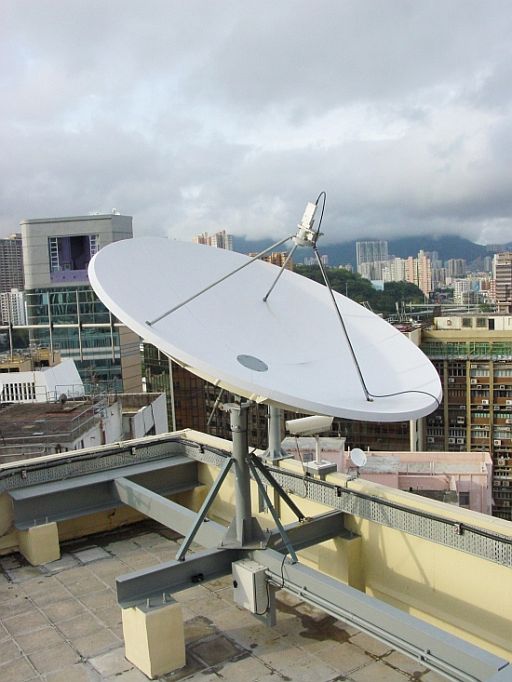New Era in Weather Satellite Reception
|
The Hong Kong Observatory has installed a "FengyunCast" system early this year. Through a single satellite antenna at the Hong Kong Observatory Headquarters (Figure 1), images from a number of weather satellites can be received. This symbolizes the data reception of weather satellite at the Observatory has entered a new era. "FengyunCast" is developed by the Chinese Meteorological Administration. It is an integral part of a global earth observational data sharing network called "GEONetCast". "FengyunCast" re-broadcasts data from various weather satellites over the Asia-Pacific region, including the Fengyun-1 and Fengyun-2 series of satellites of China, the Multi-functional Transport Satellite-1R (MTSAT-1R) of Japan, as well as the National Oceanic and Atmospheric Administration (NOAA) series and the Earth Observing System series of satellites of the USA. The latest weather satellite in the Chinese Fengyun-2 series, viz. FY-2D, and the existing FY-2C satellite are both geostationary weather satellites located above the equator at 86.5 degrees East and 105 degrees East respectively and are capable of capturing images over the Asia-Pacific region around the clock. During the rainy season, each of the two satellites increases the frequency of observation from once an hour to twice an hour. The two satellites together provide one satellite image every 15 minutes. This is very useful for monitoring such hazardous weather as tropical cyclones and rainstorms, contributing towards the prevention and mitigation of disasters. The Observatory launched a new webpage (Figure 2) of images from the FY-2D satellite on 12 June 2008: http://www.weather.gov.hk/wxinfo/intersat/fy2d/satpic_s.shtml. With the advent of weather satellite technologies, a number of weather satellites will be launched by various countries in the next few years. Our country has just launched the Fengyun-3A (FY-3A) weather satellite in late May this year. When it begins the broadcast, the Observatory will be able to receive its images via the "FengyunCast" receiving station, further enhancing weather monitoring in the region. |
Fig.1: Satellite antenna for receiving broadcast from the 'FengyunCast' system at the Hong Kong Observatory Headquarters. |
Fig.2: Webpage of FY-2D weather satellite images. |

